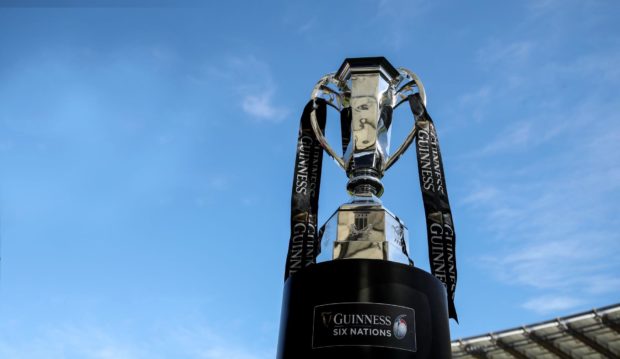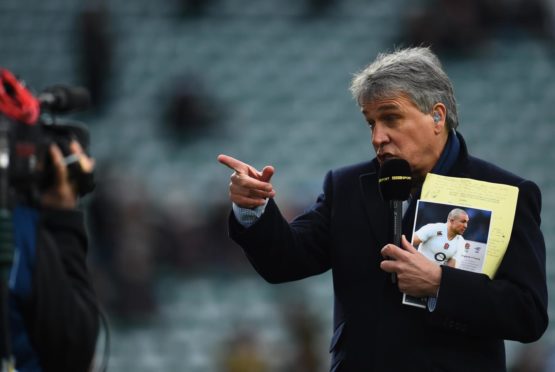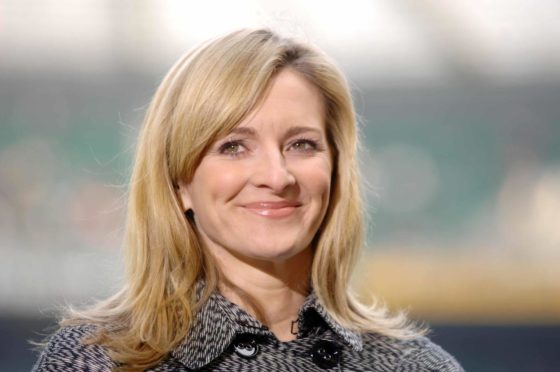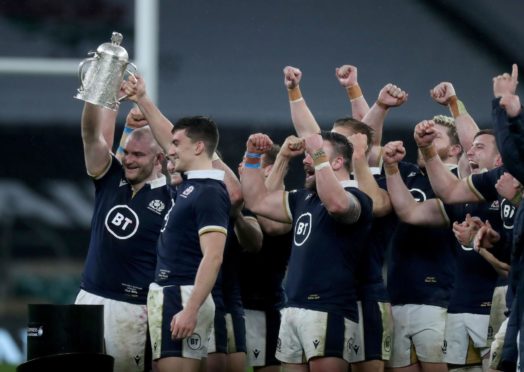Shouldn’t we be delighted that the Six Nations is staying on free-to-air TV? Well, sort of.
The Six Nations were thought, with their new venture capital partner CVC having paid so lavishly to be on board, to be examining ways of maximising the earning potential of the grand old championship.
CVC, in a previous association with F1, had hocked the TV rights for the hours of speeding traffic jams of that sport to the highest bidder.
Weren’t they likely to do the same with (Dvorak’s New World Symphony 2nd movement rising) the very lifeblood and traditions of our great game? What price the granite-faced integrity of rugby as we knew it?
There are good things about staying with BBC and ITV
Six Nations Rugby today confirmed it has entered into exclusive discussions with BBC and ITV after an agreement in principle was reached relating to all three Six Nations Championships.#SixNationsRugby #GuinnessSixNationshttps://t.co/PBd57fdEyL
— Guinness Six Nations (@SixNationsRugby) May 21, 2021
Actually, I’m not unhappy with some things in this deal. The superior commentaries of Andrew Cotter (when he’s not rambling with his dogs) and Brian Moore at the BBC, as well as Nick Mullins at ITV, will still feature.
I’m less enamoured of Eddie Butler’s excruciating “poetic” monologues and Sir Clive Woodward rambling on. But hey, John Inverdale has retired. Our cup truly runneth over.
But it probably indicates just how the value of rugby on TV has diminished, and the ever-shifting sands of TV sport.
Certainly if the idea is that staying on terrestrial TV is a way to access the young, we’re barking up the wrong tree. Rather like the newspaper you’re holding – if you’re reading this in the traditional form and not on our all-singing and dancing digital formats – nobody under 30 really watches regular TV anymore.
The days of half the population watching cooncil telly are long gone. Line of Duty, the BBC’s flagship of recent times, gloried in 12 million viewers for the Season 6 finale recently. That’s half of what used to watch Eastenders most weeks.
However, the days of subscription channel domination, at least in the UK, seems to have passed also.
Six Nations has appeal, but really just within their own borders
It’s a more nuanced market. Much as we all love it, unlike soccer’s English premiership the Six Nations has very limited appeal outwith our borders. There’s no clamour for it in the lucrative new markets in East and South Asia, and especially not in the USA.
Only in South Africa, New Zealand and to a degree Australia and Japan is there any sort of attraction for the old competition. (The Kiwis just tune in to sneer and be all superior.)
Anyway we know that in three of those territories, European Rugby – to be entirely accurate, England, France and the Lions – effectively subsidies the native game.
Given the budgets at work, it’s highly unlikely the Six Nations squeezed much more money for this new TV deal. ITV is taking on the greater share of the load – BBC will cover Wales and Scotland home games only now.
(As an aside, this gives the Beeb no excuse not to promote the highly professional Welsh-Scottish presenter Gabby Logan to be the new anchor in place of Inverdale.)
The one obvious – and welcome – benefit is that the BBC has committed to full coverage of the Women’s Six Nations. It’s a competition that can only improve and grow with greater exposure, as was showed playing even a reduced pandemic version of the championship in April.
But while we’re all delighted that we’ll see the Six Nations for nothing as usual, it’s probably more down to an actual market demand (or lack of it) than any altruistic or honourable action.
CVC may show the Unions how to properly manage their business at last
But what are CVC in it for, then? £365 million is a hefty price to pay just to sit at a round table with Mark Dodson and his counterparts from the other six unions.
There are clearly revenue streams in the championship to be exploited beyond simply TV deals. Sponsorship opportunities, massively mishandled by the Six Nations council for decades, are one.
It was also interesting to see one of the representatives of the Luxembourg-based private equity form anonymously quoted as saying that they were particularly interested in how the RFU managed to operate at a loss in the year prior to the pandemic.
A mystery that beggars belief
That is a mystery that certainly requires far greater examination. Home tests at Twickenham are such a relentless goldmine for them that it seems ludicrous that they contrive to lose money. Ditto the WRU, who have scrambled for an extra test a year just to balance their books.
Assisting the unions to run their game properly – even if CVC skim some of the money from that – would be decent business for all.
There’s still too much desperate clinging on to this mythical “integrity” in rugby’s backrooms. Mostly it’s really just a synonym for acting like rank amateurs.
From elation to despair: here’s hoping Cam Redpath recovers well
What a hellish blow for Cam Redpath, the Bath and Scotland centre, who tore his ACL playing for the West Country side and is out of rugby for the rest of 2021.
How the 21-year-old must have been relishing life back in February. Following his decision to play for the country of his father’s birth after a long flirtation with England, he made his debut against (of course) the Red Rose at Twickenham.
And he played a stormer. Looking accomplished and inventive outside Finn Russell he was somewhat surprisingly – for those of us who had seen little of him – tenacious and effective in defence.
Scotland won at Twickenham for the first time since 1983 and he lifted the Calcutta Cup. Life could surely not have been better.
But it’s all been dreadful since then. A neck injury that initially seemed innocuous meant he missed the rest of the Six Nations. He returned for Bath but played just a few games before this happened.
The way things go with ACL reconstructions, I’d reckon we won’t see him again in a Scotland shirt until a summer tour of 2022, wherever that may be taking us. The good thing is that he’ll still be just 22 then.



